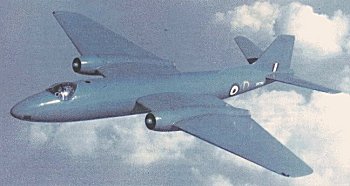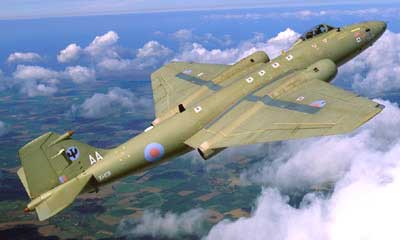
|
In 1944, The Ministry of Aircraft Procurement issued a specification for design concepts for a fast, high-altitude, jet-powered medium bomber to replace the Mosquito out of which would come the "Canberra". The initially design by English Electric envisaged a single engined, straight winged bomber with a circular cross-section , this was soon changed to an aircraft with the engines mounted at the wing roots was considered but in the end wing-mounted engines was through the best
|
| Designed to Specification B.3/45 by a English Electric team led by William Edward Willoughby Petter. After a number of design changes a contract was issued on the 7/01/46 by the Ministry of Aircraft Production for four prototypes, with a bomb load of 10.000 lb the aircraft was to have no defensive armament relying on it's high speed to evade interception, so only a crew of two was needed (a pilot and navigator/radar operator who was to use the radar bombing system). Work on the first aircraft called the A-1 started soon after. By 1947 the radar bombing system was seriously behind scheduled and the specification was revised (B.5/47) now requiring a visual bombing system and a third crew member, with a move from Preston to Warton the assembly of the first prototype was delayed it's first flight being made on the 13/04/49. The Canberra would go on to be one of the most successful aircraft to come out of the British aircraft industry in the post war era. | 
|